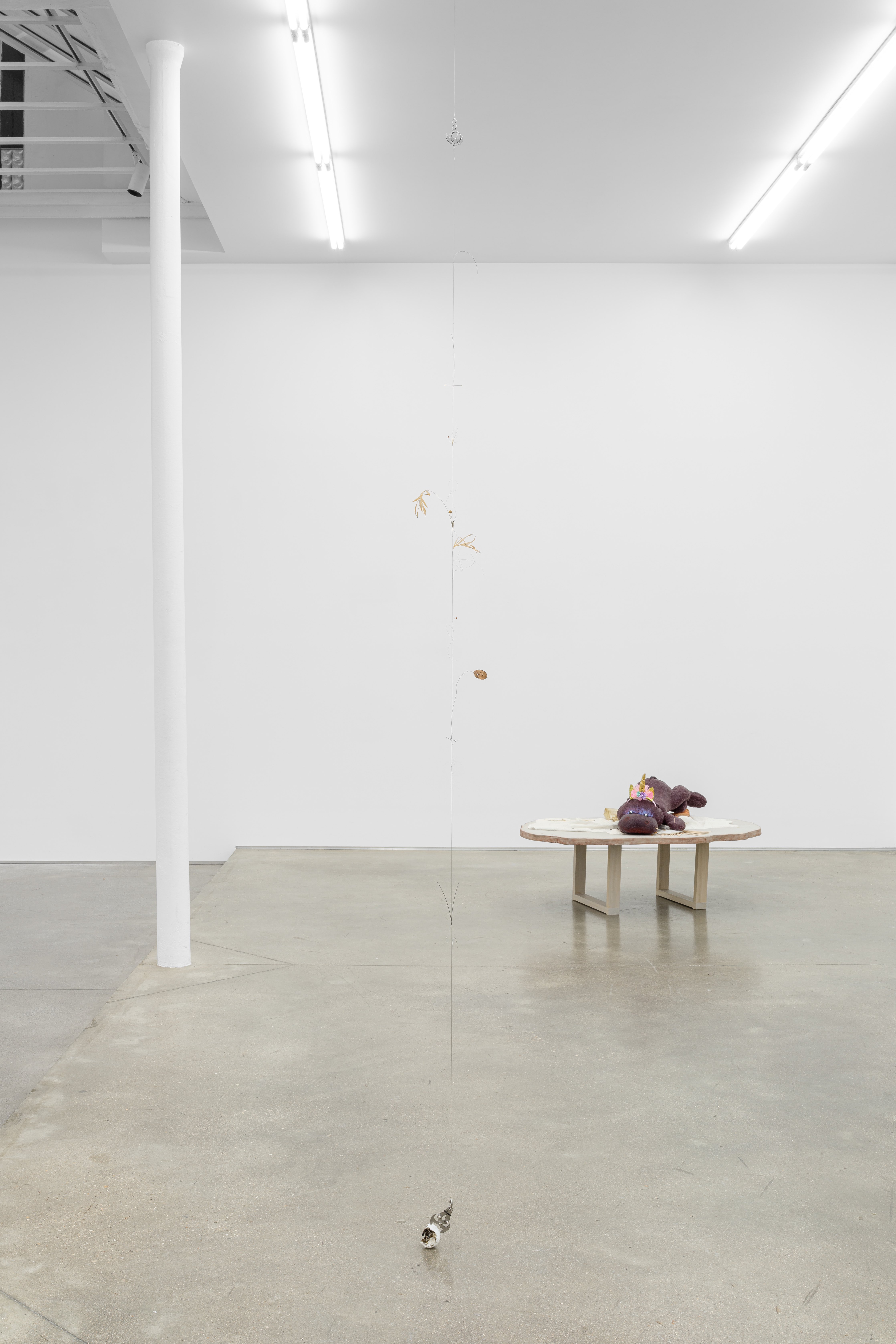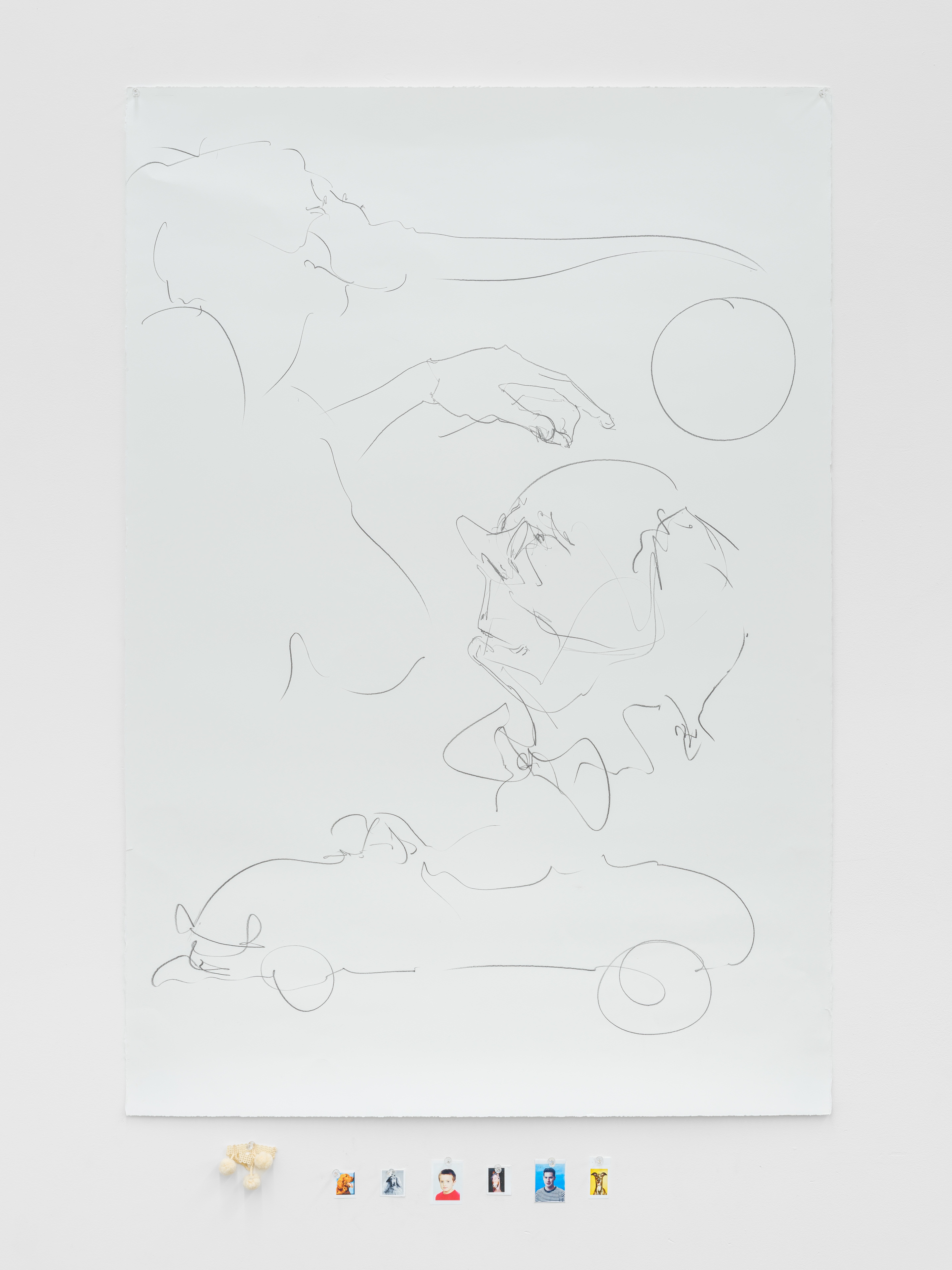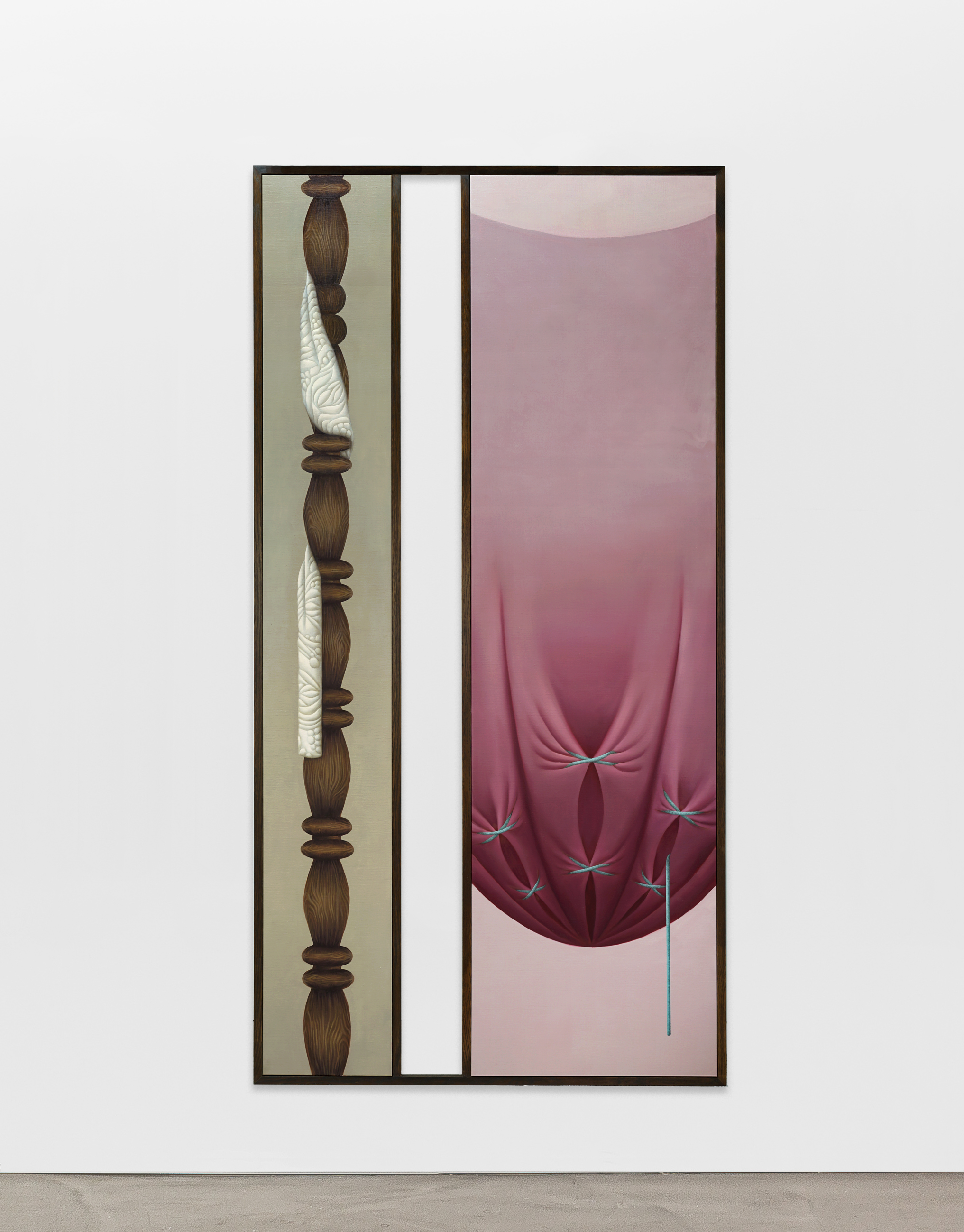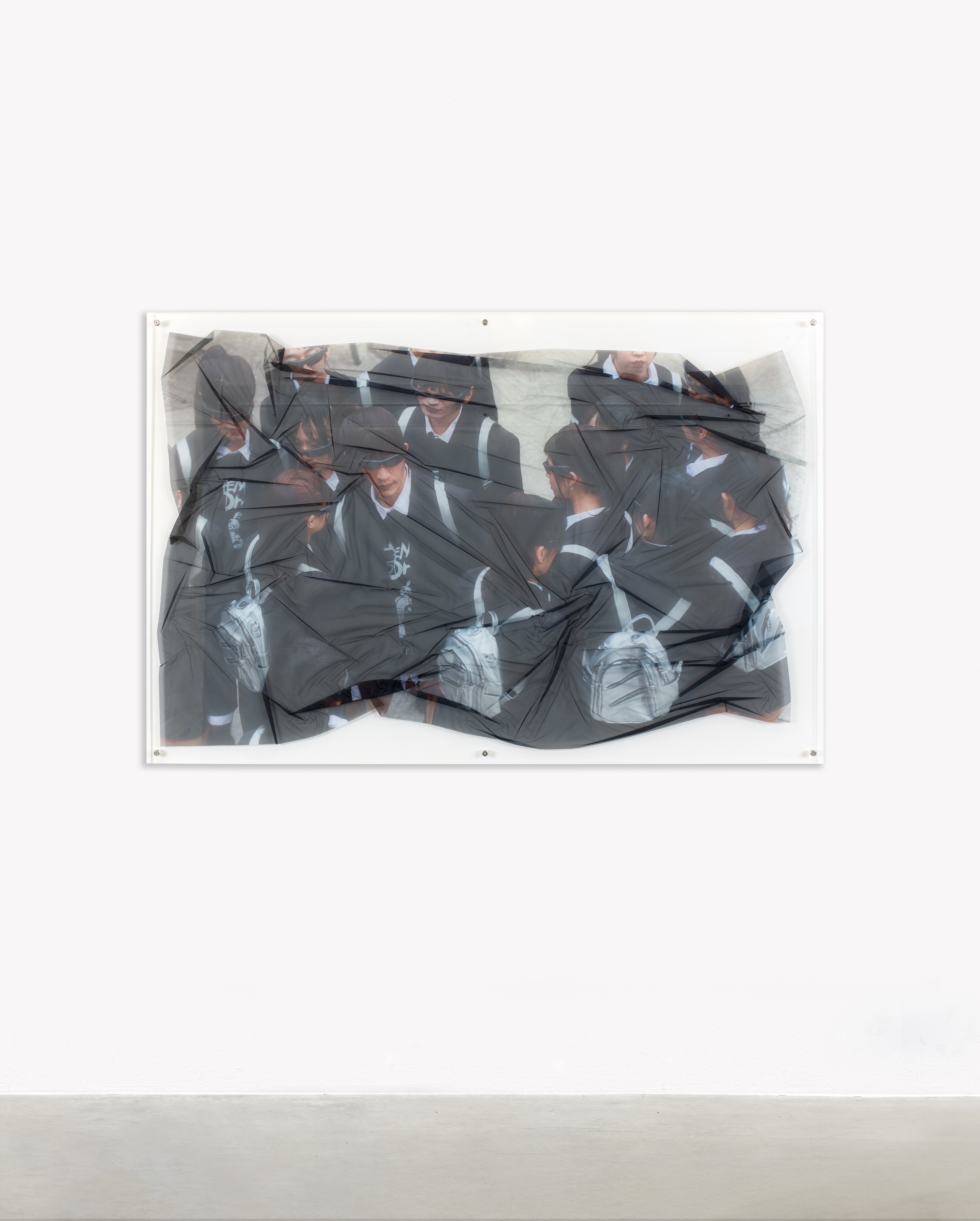Drawing on the notion of “props”–the visible accessories of illusion and their invisible supports–the eponymous exhibition at Galerie Derouillon gathers the works of six artists who navigate the refined layers of illusionism, from its sleek, desirable display to the unsettling unveiling of its underlying structures. Highlighting the artificiality inherent in the creation of illusions on stage, a prop also denotes a deceptive object: something that performs the function of trickery, appearing trustworthy yet unreal, capable of stirring emotional tides that range from delight to disillusionment.
Showcasing artistic practices anchored in everyday experience, Props moves from the remnants of a birthday party celebrated for a hippopotamus wearing a princess’ crown–represented by a recent sculpture by Liz Magor, titled Afternoon–to the quiet uncanniness that arises in studio practice through the repeated observation of ordinary objects , as captured in a video by Uri Aran. In Favourite, someone is zooming in on an indistinguishable artwork turning it into Apple Messenger stickers. Props seeks to project such complex emotions onto the white walls of the gallery, producing a peculiar sensation of eerie, pop-inflected disenchantment.

Playing with surfaces, the exhibition probes both the materiality and the “toxicity” of the screen. Its capacity to transmit sound gives it a tangible physical presence, exemplified by the striking contrast between the baroque music in Aran’s video and the exhibition’s slick, synthetic, technologically charged atmosphere. A similar sense of disorientation–and even disconnection–also emerges in Rules Of The Road, a drawing by Aran depicting an apparently wise elephant offering guidance to an elderly man seated in a child’s toy car. Below the drawing, a series of ID-style photographs–of boys, but also of horses and dogs–are neatly aligned, creating a composition at once absurd and visibly sarcastic. The work plays with the conventions of passport photography, its inherent rigidity linked to profiling and mass surveillance, while also revealing the inventive and ironic possibilities of drawing.

Props engages with optical illusions, exemplified by Diane Dal-Pra’s painting Delicate Resistance, which, through its wooden frame, evokes the physicality of a bed and the delicate textures of a duvet, or even of skin. The work recalls the memory of the body, the necessary need for comfort, reassurance, and renewal. These tactile, almost palpable, “skin-like” sensations are echoed in Liz Magor’s sculpture May/June, a transparent and surreal piece that simultaneously recalls both a garland of flowers and an assemblage of bones. Similarly, Tetsumi Kudo’s sculpture oscillates between decoration and decay: a flower in an electric yellow-green pot that gestures towards nature yet remains wholly artificial, offering a vivid allusion to toxicity.

The superficiality of surfaces, along with their prop-like qualities, is also evident in the works of Shuang Li. In her practice, the artist examines the failures of communication in the digital age, where technologically standardized channels stiffen the expression of emotion, affect, and vulnerability. Made of semi-transparent resin and plexiglass, Nanping, Nevada brings together fabrics printed with various patterns and personal objects, like a small stuffed toy rabbit, collected souvenirs that capture the softness and corporeality of bodies, here solidified to evoke the fluidity of a phone screen. Printed on mesh between sheets of plexiglass, Helena is a large photograph derived from a performance that crystallizes the experience of long-distance relationships. A group of young students, dressed in black uniforms and wearing sunglasses that obscure their individuality, are filmed recording each other’s reactions as they read family letters written during the 2020 lockdown–a period when many, including the artist, were unable to return home for an extended time.
These pieces evoke the logistical systems that underpin contemporary expressions of love and tenderness. Interspersed with the sculptures by Kirill Savchenko, the exhibition develops a reflection on artificial intelligence, algorithmic control, and their repercussions on human-machine interactions, creating new forms of hybrid collaboration.

A commercialized and cold aesthetic permeates the exhibition. Cuteness is reduced to a commodified trope, while intimacy is shaped by the powerful forces of Big Tech–transformed into a tool for rejuvenation, keeping individuals fresh, productive, and endlessly available for work. Yet, even as the exhibition seeks to expose the infrastructures–both emotional and technological–that sustain these dynamics, it risks reproducing the very sleekness and superficiality it aims to critique. It mirrors the subtle pressures and imperceptible norms that quietly govern contemporary behaviors.
Although infused with subtle, incisive humor, the exhibition, which examines the essential and existential accessories that ensnare identity, ultimately risks becoming a trap itself. By scrutinizing the mechanisms of artifacts, it turns artificial in the process, becoming the very “prop” it seeks to critique.
—
Mathilde Cassan is a Paris-based curator and writer.




